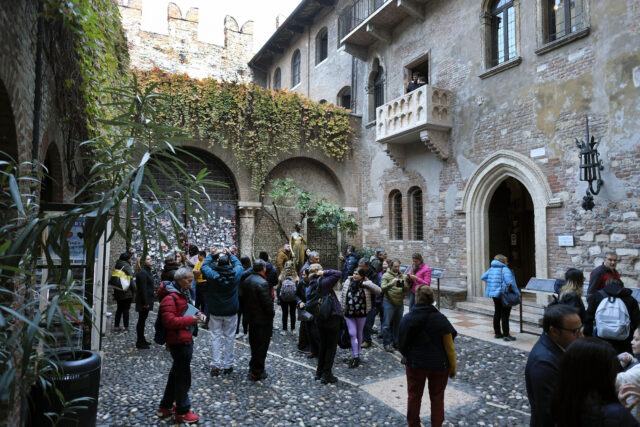Immortalized in William Shakespeare’s 1597 play Romeo and Juliet, Verona has become a pilgrimage site for lovers and literature enthusiasts. Among its many historical treasures, La Casa di Giulietta – or Juliet’s House – is a beacon of romantic lore. Adorned with a famous balcony and steeped in centuries-old legend, this Italian site continues to captivate visitors.
La Casa di Giulietta

Verona, Italy, serves as the iconic setting for William Shakespeare’s timeless play, Romeo and Juliet. Among its historic charm, one of the city’s most popular tourist attractions is La Casa di Giulietta. The 13th-century residence, once home to the Cappello family, now draws countless visitors who are enchanted by the romantic lore associated with it.
Adorned with Juliet’s famous balcony

La Casa di Giulietta is adorned with a balcony, widely recognized as the spot where the young Juliet beckons, “O Romeo, Romeo! Wherefore art thou Romeo?” This picturesque balcony overlooks a courtyard, which features a bronze statue of Juliet at its center. Tourists flock to this site to engage in a popular ritual: rubbing the statue’s right breast for luck in love.
La Casa di Giulietta is actually a museum

Once inside La Casa di Giulietta, visitors can explore a small museum filled with Renaissance-era costumes and see the actual bed used in Franco Zeffirelli’s 1968 film adaptation of the same name. Additionally, beneath the balcony, the walls are covered with thousands of love notes and graffiti left by hopeless romantics.
Truth behind the balcony

While the balcony at La Casa di Giulietta is steeped in romantic tradition, its reality is far less glamorous. William Shakespeare himself never visited Verona, and the star-crossed characters in his story are entirely fictional. Even the physical balcony on the existing building has a jaded history, as it wasn’t added until the 20th century, marking a difference of four centuries from when the play was written.
The addition by the City of Verona came shortly after the town purchased the residence in 1905, likely aiming to enhance the romantic allure of the site.
Who were the Cappello family?

La Casa di Giulietta‘s original owners, the Cappello family, served as inspiration for the Capulet family in William’s Shakespeare’s play. While the balcony and much of the lore surrounding it are modern fabrications, the connection to the family adds a layer of historical intrigue.
Inspiration for William Shakespeare’s Romeo and Juliet

The inspiration for Romeo and Juliet traces back to Arthur Brooke’s 1562 poem, The Tragicall Historye of Romeus and Juliet. The poet himself drew his inspiration from earlier Italian writers who recounted the tale of “Romeo and Giulietta” and the feud between the Montecchi and Cappelletti families.
During the medieval period, the Montecchi family were among the wealthiest and most influential nobles in Verona. Meanwhile, the Cappelletti, whose name means “little hats,” were part of a historic order of Venetian cavalrymen.
Enduring legacy of Romeo and Juliet

More from us: The Forgotten Village of Imber Was Taken From Its Villagers
While the play itself is fictional, Romeo and Juliet is loosely based on these real-life Veronese families and their historical context. This blending of fact and fiction has contributed to the enduring legacy and fascination with both the play and the city of Verona, drawing romantics and history enthusiasts alike to La Casa di Giulietta.
